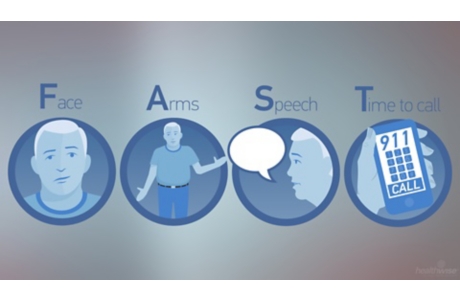Exercising to Prevent a Stroke
Topic Overview
Exercise helps lower high blood pressure, which is an important risk factor for stroke. Exercise can help you control other things that put you at risk, such as obesity, high cholesterol and diabetes.
Exercise to lower your risk of stroke
It is important to exercise regularly. Do activities that raise your heart rate. Try to do at least 2½ hours a week of moderate exercise. One way to do this is to be active 30 minutes a day, at least 5 days a week. Or try to do vigorous activity at least 1¼ hours a week. Start slowly and gradually build up your exercise program.
Moderate activity is safe for most people, but it’s always a good idea to talk with your doctor before you start an exercise program. You can use your target heart rate to figure out how hard to exercise. Use this Interactive Tool: What Is Your Target Heart Rate?
Low-intensity exercise, if done daily, also can have some long-term health benefits and lower the risk for heart problems that may lead to stroke. Low-intensity exercises have a lower risk of injury and are recommended for people with other health problems. Some low-intensity activities are:
- Walking.
- Gardening and other yard work.
- Housework.
- Dancing.
For more information about making a personal fitness plan, see the topic Fitness: Getting and Staying Active.
Exercise to prevent another stroke
If you have already had a stroke, ask your doctor what type and level of activity is safe for you. Your doctor may recommend ½ to 1½ hours a week of moderate exercise. One way to do this is to be active 30 minutes a day, 1 to 3 days a week.
If you are in a stroke rehab program, your rehab team can make an exercise program that is right for you.
Health Tools
Health Tools help you make wise health decisions or take action to improve your health.
References
Other Works Consulted
- Eckel RH, et al. (2013). 2013 AHA/ACC guideline on lifestyle management to reduce cardiovascular risk: A report of the American College of Cardiology/American Heart Association Task Force on Practice Guidelines. Circulation. http://circ.ahajournals.org/content/early/2013/11/11/01.cir.0000437740.48606.d1.citation. Accessed December 5, 2013.
- Kernan WN, et al. (2014). Guidelines for the prevention of stroke in patients with stroke and transient ischemic attack: A guideline for healthcare professionals from the American Heart Association/American Stroke Association. Stroke, 45(7): 2160–2236. DOI: 10.1161/STR.0000000000000024. Accessed July 22, 2014.
- Meschia JF, et al. (2014). Guidelines for the primary prevention of stroke: A statement for healthcare professionals from the American Heart Association/American Stroke Association. Stroke, published online October 28, 2014. DOI: 10.1161/STR.0000000000000046. Accessed October 29, 2014.
- U.S. Department of Health and Human Services (2008). 2008 Physical Activity Guidelines for Americans (ODPHP Publication No. U0036). Washington, DC: U.S. Government Printing Office. Available online: http://www.health.gov/paguidelines/guidelines/default.aspx.
- Winstein CJ, et al. (2016). Guidelines for adult stroke rehabilitation and recovery: A guideline for healthcare professionals from the American Heart Association/American Stroke Association. Stroke, published online May 4, 2016. DOI: 10.1161/STR.0000000000000098. Accessed June 3, 2016.
Current as of: September 26, 2018
Author: Healthwise Staff
Medical Review:E. Gregory Thompson MD – Internal Medicine & Martin J. Gabica MD – Family Medicine & Adam Husney MD – Family Medicine & Richard D. Zorowitz MD – Physical Medicine and Rehabilitation
This information does not replace the advice of a doctor. Healthwise, Incorporated, disclaims any warranty or liability for your use of this information. Your use of this information means that you agree to the Terms of Use. Learn how we develop our content.
<script src=”https://assetpool.healthwise.net/12.2/common/desktop/alpine.rhtml.kbnet.awesom





